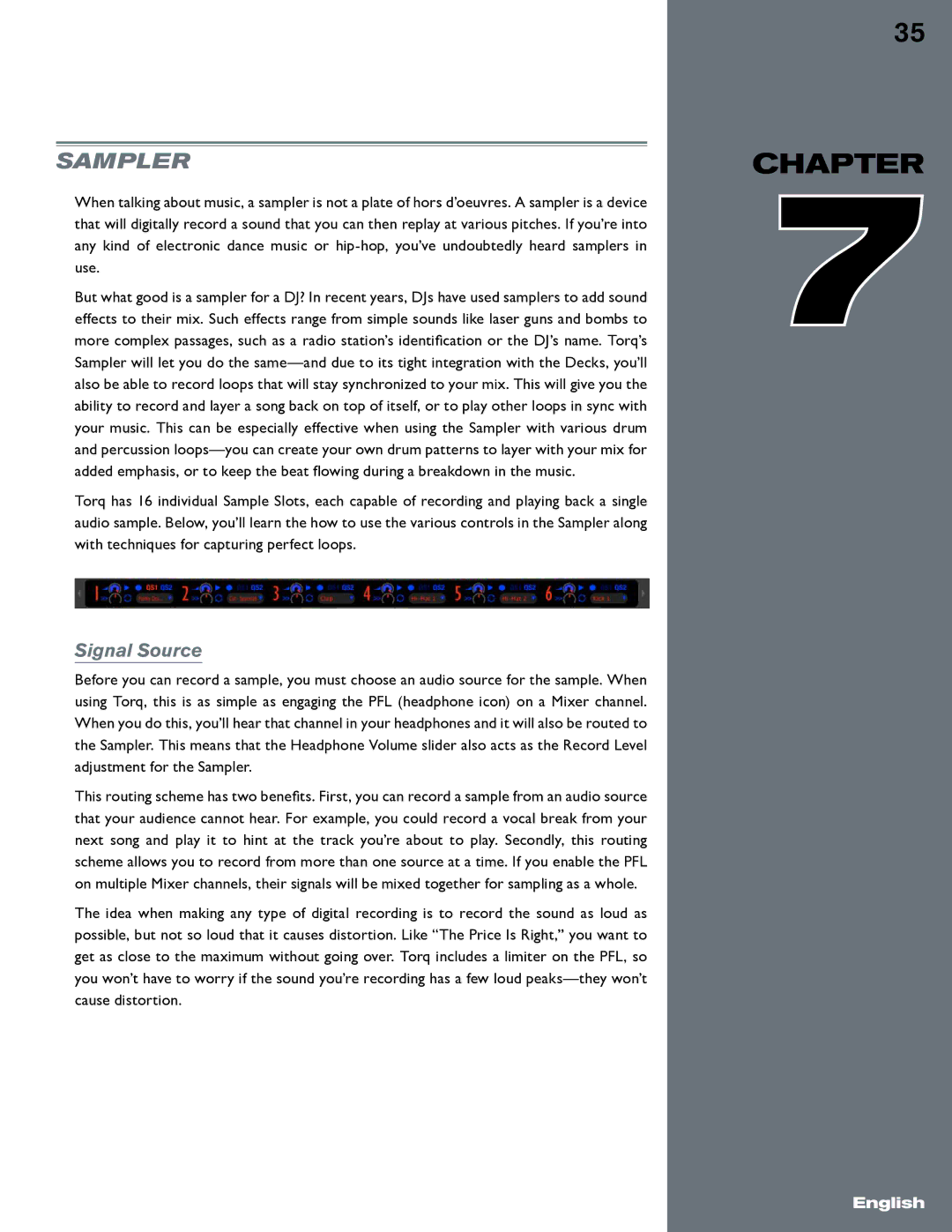
Sampler
When talking about music, a sampler is not a plate of hors d’oeuvres. A sampler is a device that will digitally record a sound that you can then replay at various pitches. If you’re into any kind of electronic dance music or
But what good is a sampler for a DJ? In recent years, DJs have used samplers to add sound effects to their mix. Such effects range from simple sounds like laser guns and bombs to more complex passages, such as a radio station’s identification or the DJ’s name. Torq’s Sampler will let you do the
Torq has 16 individual Sample Slots, each capable of recording and playing back a single audio sample. Below, you’ll learn the how to use the various controls in the Sampler along with techniques for capturing perfect loops.
Signal Source
Before you can record a sample, you must choose an audio source for the sample. When using Torq, this is as simple as engaging the PFL (headphone icon) on a Mixer channel. When you do this, you’ll hear that channel in your headphones and it will also be routed to the Sampler. This means that the Headphone Volume slider also acts as the Record Level adjustment for the Sampler.
This routing scheme has two benefits. First, you can record a sample from an audio source that your audience cannot hear. For example, you could record a vocal break from your next song and play it to hint at the track you’re about to play. Secondly, this routing scheme allows you to record from more than one source at a time. If you enable the PFL on multiple Mixer channels, their signals will be mixed together for sampling as a whole.
The idea when making any type of digital recording is to record the sound as loud as possible, but not so loud that it causes distortion. Like “The Price Is Right,” you want to get as close to the maximum without going over. Torq includes a limiter on the PFL, so you won’t have to worry if the sound you’re recording has a few loud
35
CHAPTER
71
English
